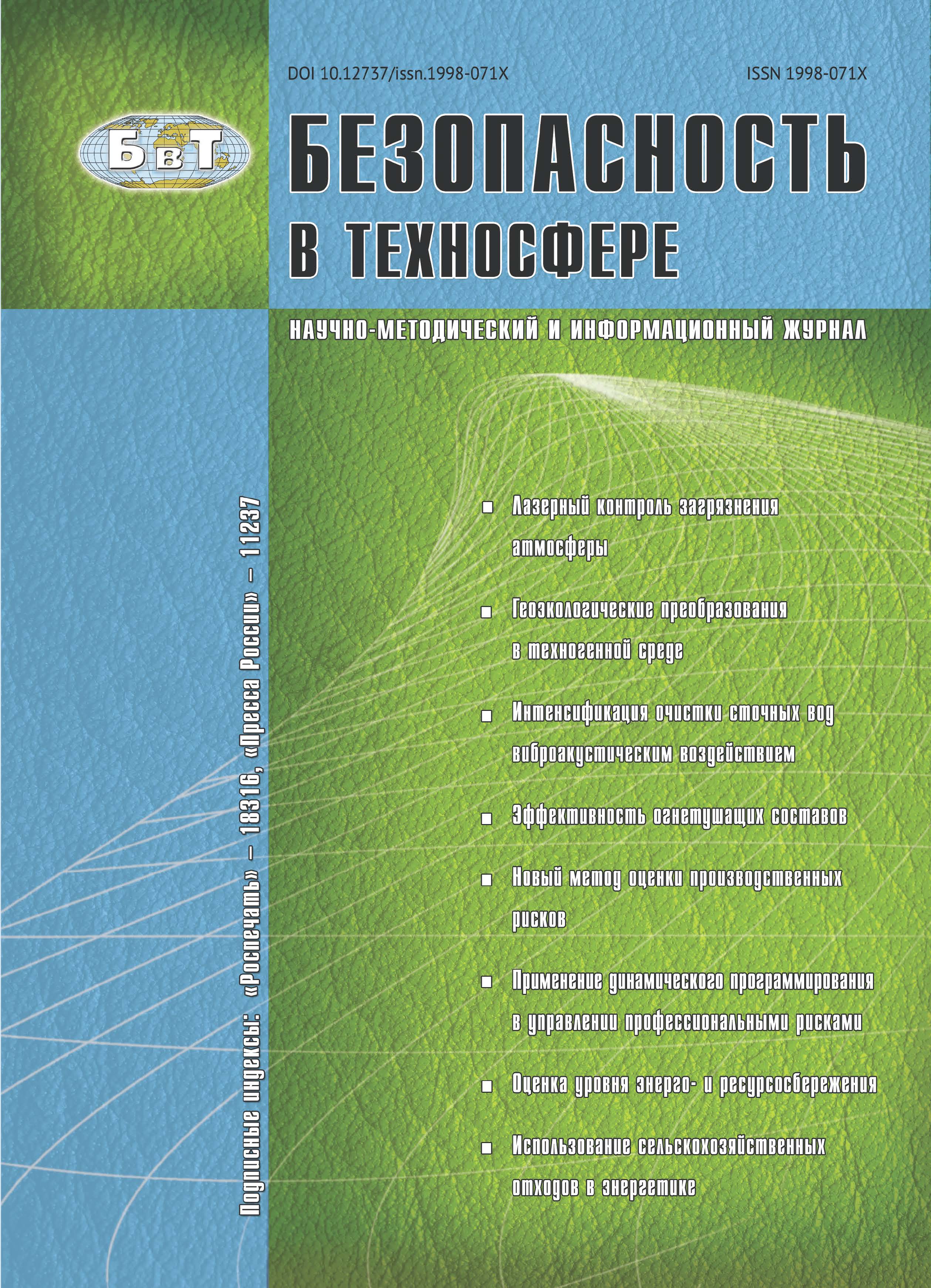Russian Federation
Some questions related to the Northern Sea Route status are considered in this paper. An analysis of radiation sources influence on environment, biota and human beings in the Arctic region has been carried out, and stages of this influence formation have been allocated. The world practice of ocean disposal is considered, and the information on nuclear and radiation hazardous objects dumped in the northwest Arctic seas has been submitted. The questions connected with lifting of the nuclear submarine K-27 dumped in the Kara Sea and the nuclear submarine “Komsomolets” sunken in the Norwegian Sea have been stated. Data on a modern radio ecological situation in places of dumped nuclear and radiation hazardous objects have been submitted. Such option of marine environment remediation as dumped/sunken objects lifting has been considered. An analysis of existing Russian technologies for lifting of the dumped/sunken objects has been carried out. The conclusions are drawn that the sunken and dumped objects containing spent nuclear fuel and radioactive waste, don´t constitute now real radio ecological danger to the population and environment, but they should be considered as sources of potential danger, whose scales and consequences will depend on protective barriers condition and mechanisms of further migration of radioactive materials in marine ecosystems. Regular complex surveys of the most potentially hazardous dumped/sunken objects’ status during joint international scientific and research expeditions should be a first step towards this problem solution.
аrctic region, dumped objects, spent nuclear fuel, radioactive waste, radionuclides.
1. Введение
Уникальный во многих отношениях Арктический регион играет исключительную роль для планеты в целом и особенно для прилегающих к нему стран. Эта роль определяется тем, что Арктика - богатейший источник сырьевых ресурсов, хорошая перспектива для внутренних и мировых транспортных коммуникаций, основа формирования глобальных климатических и гидрологических процессов в Мировом океане и на планете в целом, обладающая исключительной чувствительностью экологических параметров.
Справедливость вышесказанного подтверждает тот факт, что в 2011 г. в Государственной Думе РФ был разработан проект закона «О Северном морском пути», которым подтверждается статус Северного морского пути (СМП) как исторически сложившейся национальной транспортной коммуникации в арктической зоне, где базируются силы Северного флота РФ, сосредоточены важнейшие предприятия оборонной промышленности России [1]. В январе 2013 г. вступил в силу Федеральный закон № 132-ФЗ «О внесении изменений в отдельные законодательные акты Российской Федерации в части государственного регулирования торгового мореплавания в акватории Северного морского пути» [2].
Закон позволит привести существующую систему управления СМП в соответствие с Морской доктриной РФ для обеспечения национальных интересов в Арктике. Принятие закона должно обеспечить единую систему управления в акватории СМП и создание современной инфраструктуры, обеспечивающей безопасные условия плавания судов, включая навигационно-гидрографическое обеспечение и ледокольную проводку.
1. Levitin. I. Report at the II International forum "The Arctic - the Territory of Dialogue" [Arktika - territoriya dialoga]. September 22-23, 2011, Arkhangelsk. Available at: http://ria.ru/arctic_news/20110922/441673665.html (in Russian).
2. The federal law No. 132-FZ "About modification of separate acts of the Russian Federation regarding state regulation of trade navigation in the water area of the Northern Sea Route". Rossiyskaya gazeta [The Russian newspaper ]. July 30, 2012. (in Russian).
3. Putin V.V. Report at the II International forum "The Arctic - the Territory of Dialogue"[Arktika - territoriya dialoga]. September 22-23, 2011, Arkhangelsk. http://premier.gov.ru/events/news/16536/ (in Russian).
4. Khvostova M.S. To history of studying of radioactive pollution of the seas of Russia. Institute of history of natural sciences and technology of S. I. Vavilov of the Russian Academy of Sciences. Godichnaya nauchnaya konferentsiya [Year scientific conference]. Moscow, Dipol-T Publ., 2004. Pp.560-564. (in Russian).
5. Kuznetsov V.M., Chechenov H.Zh., Nikitin V.S. Vyvod iz ekspluatatsii ob"ektov ispol´zovaniya atomnoy energii [Decommissioning of objects of use of atomic energy]. Moscow, Voskhod-A Publ. 2009. 631 p. (in Russian).
6. Sivintsev Yu.V., Vakulovsky S.M., Vasilyev A.P., Vysotsky V.L., Gubin, etc. Tekhnogennye radionuklidy v moryakh, omyvayushchikh Rossiyu: radioekologicheskie posledstviya udaleniya radioaktivnykh otkhodov v Arkticheskie i dal´nevostochnye morya (“Belaya kniga-2000”) [Technogenic radionuclides in the seas washing Russia: radio ecological consequences of removal of radioactive waste to the Arctic and Far East seas ("The white book-2000")]. Moscow, IZDAT Publ., 2005. 624 p. (in Russian).
7. Vremennye sanitarnye trebovaniya k zakhoroneniyu v more radioaktivnykh otkhodov (VSTZ-66) [Temporary sanitary requirements to burial in the sea of radioactive waste (VSTZ-66)]. Navy. Moscow.1966. 68 p. (in Russian).
8. Matishov G.G., Matishov D.G., Kondakov A.A., etc. Mezhdunarodnaya (amerikano-norvezhsko-rossiyskaya) ekologicheskaya ekspeditsiya v Pechorskoe more, na Novuyu Zemlyu, Kolguev, Vaygach, Dolgiy v iyule 1992 g. (NIS “Dal´nie Zelentsy”) [International (American-Norwegian-Russian) ecological expedition to the Pechora Sea, to Novaya Zemlya, Kolguev, Vaygach, Dolgiy in July, 1992 (NIS "Dalniye Zelentsy")]. Prepr. Apatity Publ., 1992. 32 p. (in Russian).
9. Polikarpov G.G. Vvedenie. Zagryaznenie morey vokrug poberezh´ya SNG, preimushchestvenno Arktiki [Introduction. The scientific importance of a problem. Pollution of the seas round the coast of the CIS, mainly the Arctic]. P.1: Materials of the international conference. Arkhangelsk, July 19-23, 1993. Sevastopol, 1993, pp. 11-13. (in Russian).
10. Sarkisov A.A., Sivintsev Yu.V., Vysotsky V.L., Nikitin V.S. Atomnoe nasledie kholodnoy voyny na dne Arktiki [Nuclear heritage of cold war at the bottom of the Arctic]. Moscow. IBRAE of the Russian Academy of Sciences. 2009. 82 p. (in Russian).
11. Zakharchev A. Report at the 25 plenary sessions of KEG IAEA, seminar "Economy of the treatment of SNF: processing and direct isolation" [Ekonomika obrashcheniya s OYaT: pererabotka i neposredstvennaya izolyatsiya].October 6-7, 2011, Sweden. Available at: http://news .mail.ru/politics/7002307/ (in Russian).
12. Sarkisov A.A., Antipov S.V., Vysotsky V.L. Priority drafts of the program of rehabilitation of the Arctic seas from the flooded and sunk nuclear and radiation dangerous objects and need of the international cooperation. Arctic: ecology and economy [Arktika: ekologiya i ekonomika]. 2012, I. 4(8), pp. 4-15. (in Russian).






